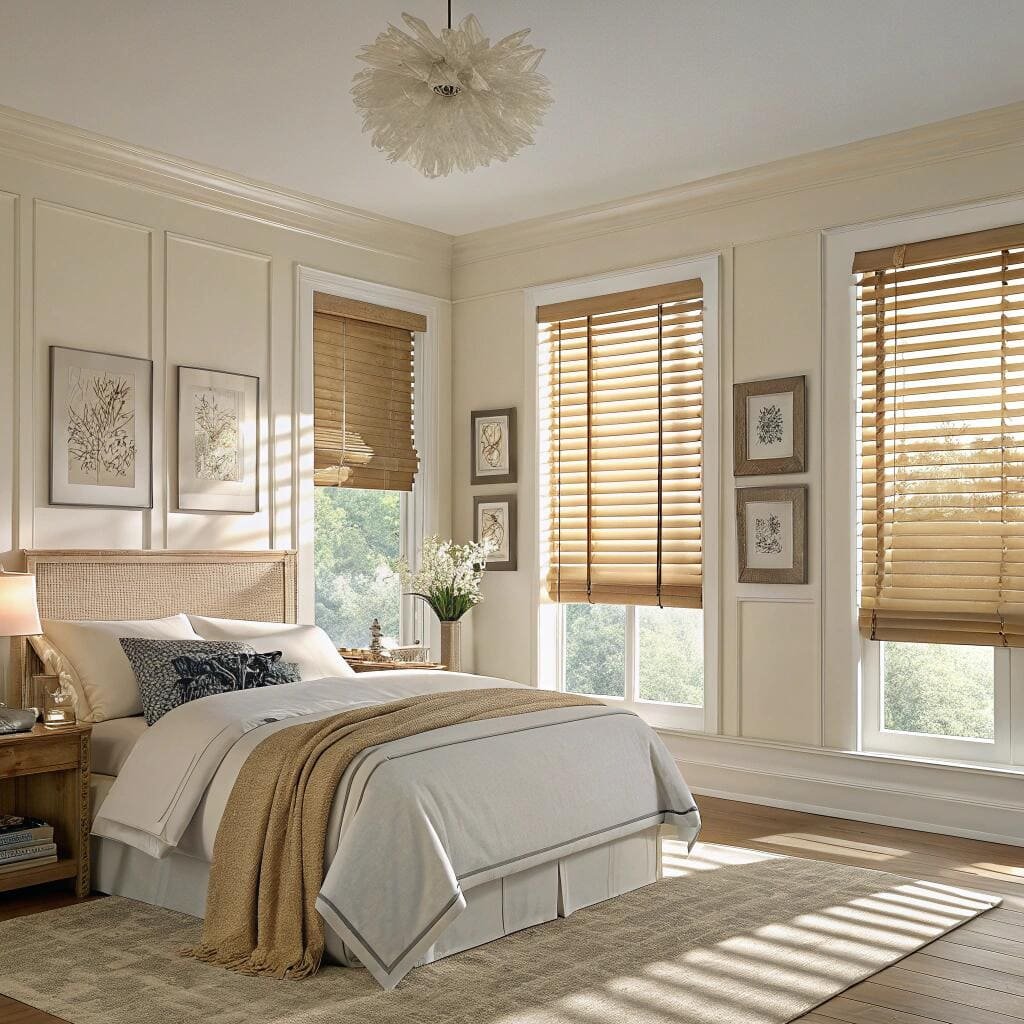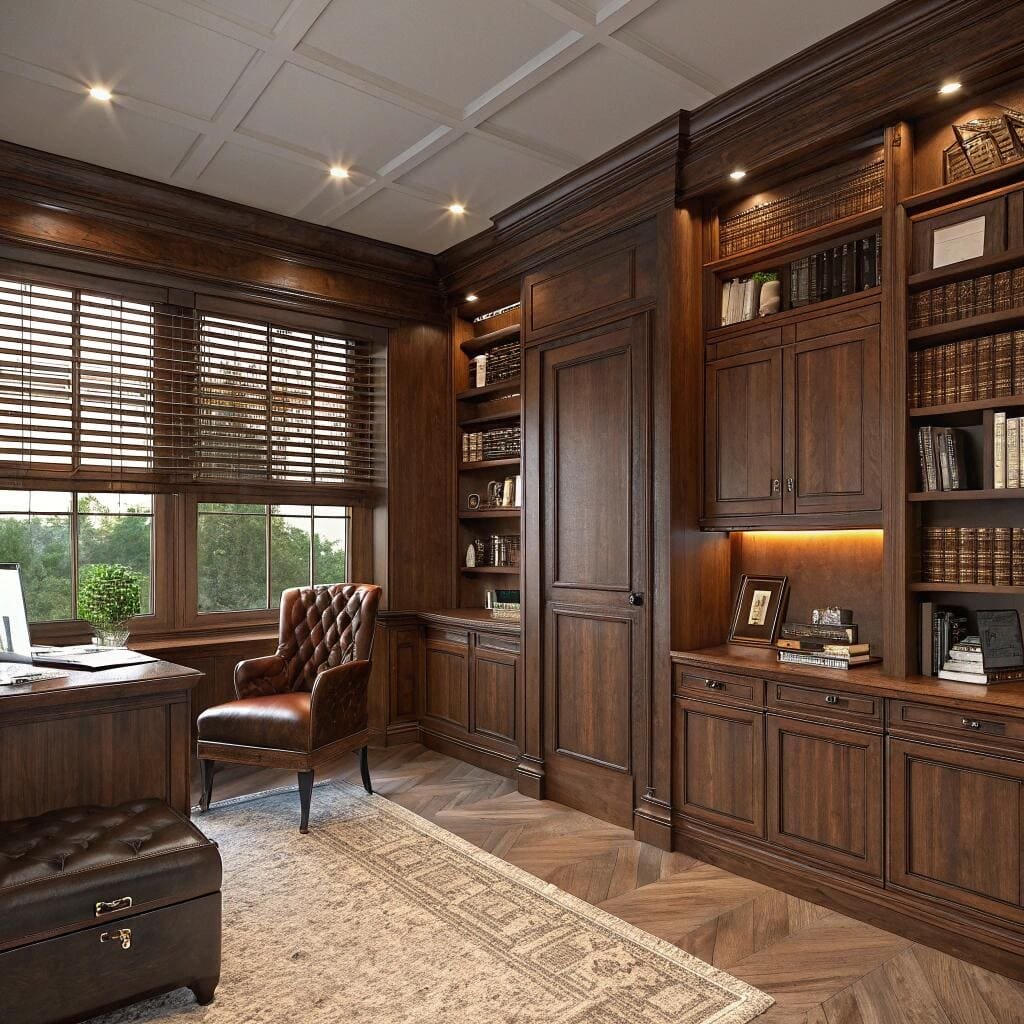Struggling to choose blinds? Your windows deserve quality. Weighing wood vs. faux wood blinds involves critical trade-offs in aesthetics and longevity—ignoring these risks costly replacements.
Faux wood blinds mimic real wood visually but use durable PVC/composite materials, offering superior moisture resistance and lower maintenance, while genuine wood provides unmatched natural warmth but requires dry environments and meticulous care.

Selecting the right blinds transforms your space. Balancing appearance and durability prevents future regrets. Consider your room’s purpose and climate before deciding.
How to tell wood blinds from faux wood blinds?
Need quick identification? Mistakes waste time and money. Check subtle clues in texture and behavior first.
Authentic wood blinds feel warm with natural grain variations and produce a hollow sound when tapped, while faux wood feels smooth/cool and sounds flat; real wood also absorbs room scents and costs 20-40% more.
[^1]](https://velablinds.com/wp-content/uploads/2025/07/2-15.jpg)
Critical identification markers
For project buyers like Emma, spotting differences ensures specification accuracy and avoids client dissatisfaction. Key indicators:
| Characteristic | Real Wood Blinds | Faux Wood Blinds |
|---|---|---|
| Surface Texture | Natural grain variations, knots | Uniform grain, plastic-like smoothness |
| Temperature | Warm (absorbs room heat) | Cooler (synthetic material) |
| Weight | Lighter slats (~30% less than faux) | Heavier due to PVC/composite |
| Sound Test | Resonant hollow knock | Dull, muted tap |
| Humidity Response | Warps within months in bathrooms | Zero warping even in steam rooms |
Real wood slats measure 1.5-2mm thick with narrower widths, stacking compactly when raised, while faux wood exceeds 2.5mm thickness, creating bulkier stacks. Bathroom/kitchen installations almost always use faux wood—real wood warps at 55%+ humidity within 6 months. For commercial projects needing consistency, faux wood provides identical slats, whereas natural wood variations require batch matching during ordering.
Are faux wood blinds more durable?
Investing in longevity? Blinds endure daily abuse. Material science reveals why synthetic wins in resilience.
Faux wood blinds significantly outlast real wood in humid or high-traffic zones, resisting warping and UV fading for 8-15 years versus real wood’s 5-10 years in ideal conditions, per ASTM durability testing.

Why composition dictates lifespan
Project contractors prioritize durability metrics that affect maintenance costs and tenant satisfaction:
| Durability Factor | Faux Wood Performance | Real Wood Performance |
|---|---|---|
| Moisture Resistance | Impervious to humidity (<0.5% expansion) | Warps at >45% humidity exposure |
| UV Stability | Withstands 10+ years direct sun exposure | Requires UV coatings; fades in 3-5 years |
| Impact Resistance | Withstands 50J impacts without cracking | Dents easily (under 15J impact threshold) |
| Cleaning Tolerance | Survives chemical/hose cleaning | Water exposure causes permanent staining |
Faux wood’s polymer composition provides inherent waterproofing, passing ANSI/BHMA A156.31 water resistance tests with zero deformation. This outperforms wood, which loses structural integrity after accidental liquid spills. Studies show faux wood maintains colorfastness after 10,000+ hours UV exposure—crucial for south-facing commercial buildings. The National Fenestration Rating Council notes faux wood retains insulating value regardless of humidity, unlike wood which loses R-value when swollen. For high-traffic lobbies or schools, faux wood resists scratches and impact damage far better.
What is the life expectancy of faux wood blinds?
Budgeting for replacements? Lifespan drives TCO. Faux wood outperforms across most installations.
Quality faux wood blinds last 8-15 years with minimal upkeep—twice real wood’s 5-10 year lifespan in humid areas—but fail faster in extreme heat (>60°C) or direct UV exposure, requiring UV-stabilized blends.

Maximizing your investment
Interior designers like Emma calculate lifecycle costs for clients. Key data:
| Environment | Avg. Lifespan | Failure Triggers | Extension Tips |
|---|---|---|---|
| Low Humidity (Bedrooms) | 12-15 years | Cord mechanism wear | Choose motorized lifts |
| High Humidity (Bathrooms) | 10+ years | None | Standard cleaning suffices |
| Full Sun Exposure | 7-8 years | UV degradation | Specify UV-inhibited materials |
| Commercial Spaces | 5-7 years | Impact damage | Upgrade to 100% virgin PVC |
Manufacturers like Hunter Douglas offer 10-year anti-warp guarantees on faux wood versus 5 years for real wood. Accelerated aging tests at UL labs reveal temperature cycling causes faux wood slats to become brittle after ~7 years in desert climates, though composites extend this. Project managers should select faux wood with ASTM E84 Class A fire ratings for commercial jobs. Preventive care: Vacuum monthly and lubricate mechanisms annually. Replacement timelines align with typical renovation cycles.
What are the disadvantages of faux wood blinds?
Weighing compromises? Perfection doesn’t exist. Know faux wood’s limitations before choosing.
Faux wood blinds sacrifice authenticity with less tactile warmth and can yellow in UV-heavy zones; their heavier weight complicates large-window operation while potential VOC off-gassing requires Greenguard certification.

Critical trade-offs for designers
For Emma procuring luxury residences, faux wood’s limitations demand strategic application:
| Disadvantage | Impact on Projects | Mitigation Strategies |
|---|---|---|
| Weight (40% heavier than wood) | Requires reinforced headrails for >72" widths | Use aluminum reinforcement bars |
| Authenticity Gap | Less grain depth and natural variation | Opt for embossed veneer finishes |
| UV Yellowing Risk | Discoloration after 5+ years in direct sun | Select UV-inhibited formulations |
| Environmental Concerns | Non-biodegradable materials | Source recycled-PVC options |
| Temperature Sensitivity | Warps at sustained >60°C exposure | Avoid greenhouse/atrium installations |
Faux wood lacks real wood’s ability to be restained for design changes—forcing full replacement. Thermal imaging shows faux wood reaches 65°C+ in south-facing windows in summer, expanding gaps between slats. LEED projects require EPD-certified composites to mitigate VOC risks. The California Air Resources Board notes some faux woods emit vinyl chloride below 0.05 ppm—acceptable for most spaces with certification. For high-end residential projects, pairing faux wood in wet areas with genuine wood in living spaces balances cost and elegance.
Which blinds are better, wood or faux wood?
Finalizing specifications? Context is king. Match materials to environment and usage patterns.
Choose faux wood blinds for kitchens/bathrooms or budget-driven projects (saving 30-50%) while selecting real wood for premium interior spaces needing authenticity—both last decades if correctly matched to room conditions.

Decision matrix for professional installers
Project buyers like Emma analyze these factors before specifying:
| Project Need | Preferred Material | Key Reasons | Cost Implication |
|---|---|---|---|
| Luxury Hotel Lobby | Genuine hardwood | Unmatched aesthetic prestige | $200-$650 per window |
| Rental Bathroom | Premium faux wood | Waterproof, vandal-resistant | $100-$250 per window |
| Historic Renovation | Stain-grade real wood | Historical accuracy, repairability | Custom pricing |
| Corporate Office | Commercial-grade faux | Maintenance reduction | $180-$400 per window |
| Sun-Filled Conservatory | UV-stabilized faux | Temperature resistance | $220-$350 per window |
Faux wood blinds outperform in humidity testing (maintaining integrity at 80% RH versus wood failing at 65% RH), while real wood provides better insulation with its cellular structure—reducing HVAC loads by 8-12%. For Emma’s hospitality clients, faux wood in guest bathrooms eliminates replacement costs from steam damage. Energy modeling shows wood blinds provide slightly better thermal breaks in dry environments. The US Forest Service confirms sustainably sourced basswood has lower lifetime carbon than PVC alternatives. Hybrid approaches: Use wood in living rooms and faux wood in wet areas throughout a single property.
Conclusion
Both faux and real wood blinds[^2] serve distinct roles—faux wins in durability for humid/spaces while real wood offers unmatched elegance. Match materials to room conditions.
Get custom samples tailored to your project's humidity, UV exposure, and aesthetic needs—email us technical specs today for same-day quotes: info@velablinds.com
Extended FAQ Section
How long do real wood blinds last in dry climates?
Properly maintained real wood blinds survive 10-15 years in humidity-controlled spaces like bedrooms, but require quarterly oil treatments and immediate spill cleanup to prevent warping/staining. Dry-climate installations avoid moisture damage but remain vulnerable to UV fading—rotating slats annually extends appearance consistency.
Can faux wood blinds warp?
Quality faux wood resists warping even at 80% humidity, though prolonged heat exposure above 60°C can cause slat deformation. Ensure polymer blends meet ANSI/BHMA standards for thermal stability. Cheaper vinyl models may warp near heat vents—specify fiberglass-reinforced composites for within 18" of HVAC outputs.
Are wood blinds safer than faux wood?
Natural wood emits negligible VOCs but carries higher flammability unless treated. Faux wood contains no organic material to combust but may release chlorinated compounds at extreme temperatures. Both materials require child-safe cordless systems to meet ASTM F2085 safety standards for residences.
---
[^1]: Explore the advantages of faux wood blinds, including durability and maintenance, to make an informed choice for your space.
[^2]: Discover the unique benefits of real wood blinds, such as aesthetic appeal and warmth, to enhance your interior design.Partner with VelaBlinds for Your Next Project
Smart window treatments shouldn't be complicated. After working with 500+ distributors and contractors worldwide, I've streamlined the process to get you quality products, competitive pricing, and reliable support - every time.
Why project professionals choose VelaBlinds:
- ✅ Fast, Accurate Quotes - Detailed specs and pricing within 24 hours
- ✅ Transparent Pricing - No hidden fees, volume discounts clearly outlined
- ✅ Quality Assurance - Direct partnerships with certified OEM manufacturers
- ✅ Project Support - Dedicated account manager from quote to delivery
Start your next project:
📧 Quick Quote: Send your requirements to info@velablinds.com
📱 Direct Contact: WhatsApp +86 137 2012 8317
🌐 Browse Solutions: https://velablinds.com/
📁 Product Resources: Access spec sheets, catalogs & project files
Jimmy Chen, Founder
"I built VelaBlinds to solve the real challenges I faced as a project buyer - long lead times, unclear specs, and unreliable suppliers. Let's discuss how we can power your projects with smarter blinds."
Serving distributors and contractors across North America, Europe, and Australia since 2018.



